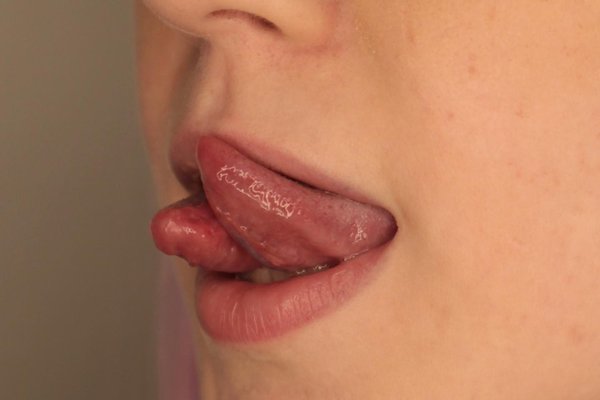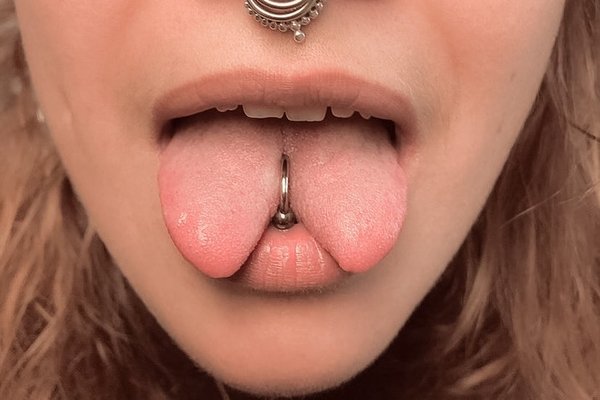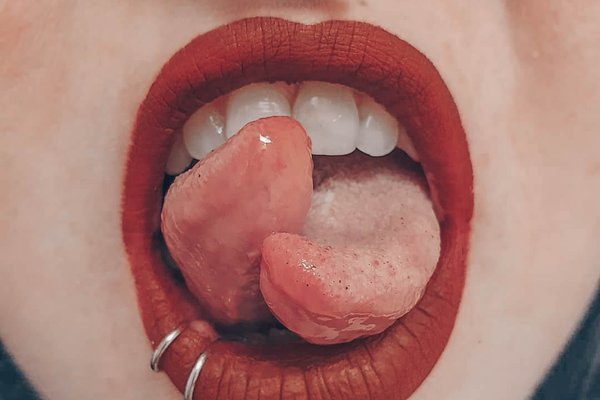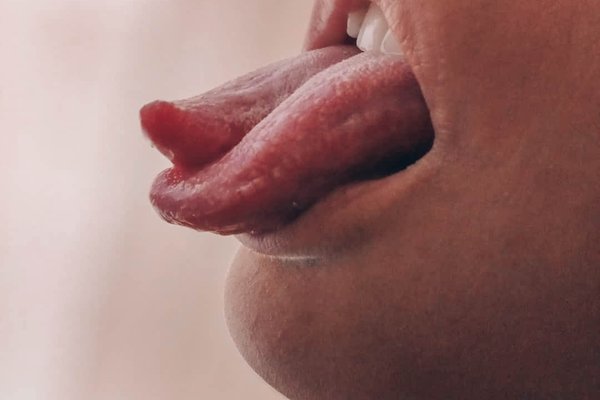Tongue splitting:
what is it, features and aftercare
Tongue splitting involves splitting the tip of the organ.
This is one kind of body modification. Splitting of the tongue is done to achieve the tongue effect of a snake or lizard. People choose this the procedure in search of new sensations or following the example of friends and family. For others, a tongue splitting becomes an act of self-knowledge and self-improvement. Many countries have banned the procedure, which may have undesirable consequences:
- Infection and inflammation.
- Heavy bleeding.
- Nerve damage.
- Speech disorder.
- Problems with swallowing and breathing.
- Impaired sensitivity, tongue numbness.
If you decide to make a tongue splitting, contact the salon «VeAn», where only experienced piercers work. Professional performance of the procedure significantly reduces the risk of complications.

Tongue splitting: history
In history, a split tongue is mentioned in connection with the practices of Hatha Yoga and Kumbhaka Yoga, which originated in the 11th century.
Such a tongue is used in Indian practice for breathing exercises. The purpose of the exercise is to block the energy leakage of the body. Yogis practice the ritual to achieve a state of catatonia and union with God. In the 20th century, a split tongue became popular in Western cultures.


Tongue splitting:
what is the procedure?
Usually, a split is made at the tip of the organ.
The length of the incision varies between 3-5 cm, in some cases the split reaches the middle of the tongue. During the procedure, muscles and nerve endings are damaged. Local anesthesia is a mandatory preparatory stage. The duration of the procedure is about 20 minutes. Basic techniques:
- Cut with a scalpel.
- To create the cut the master uses surgical tools. He/she cuts tissue from tip to point indicated by the client. Stitches are placed on the sliced parts of the tongue to reduce bleeding.
- Laser transection.
- The laser beam passes through soft tissue along the splitting line. As a result, the tongue is split. At the same time, the wound is cauterized, allowing to reduce the bleeding. Once the incision is made, the piercer imposes stitches.
In the area of the tongue there are large arteries. To avoid damage to the blood vessels, it is important to perform the procedure in a professional salon. Immediately after the session, pain and swelling of soft tissues occurs. Painful sensations and swelling often persist until complete healing. If the bleeding from the wound does not stop within a few days, increased body temperature, bad breath appeared, it is necessary to consult a piercer or a doctor.

Tongue splitting: Aftercare
In «VeAn» salon you will receive detailed instructions on how to care for the incision to prevent the development of infection and accelerate healing.
You can buy professional aftercare products. The healing period is 2-3 weeks. Main recommendations:
- Daily disinfecting of the wound.
- Protection against mechanical damage.
- Eat soft or liquid food.
In case of severe pain, take painkillers. After healing the incision, you will have to learn again to manage the split organ. The procedure is reversible. If you no longer want to have a split tongue, you can sew the halves together. Usually, the stitch is done by a plastic surgeon or dentist.


Further recommendations
To speed up tissue recovery and return to normal life in a short time, you should follow the rules:
- Strictly follow the recommendations of the piercer.
- Sleep on the pillow to keep the head above the body level. This position helps to reduce swelling.
- Do not ingest blood discharge from the wound, which can cause irritation of the stomach mucosa and nausea attacks.
- Do not touch the wound with your hands, avoid traumatic damage to the incision when in contact with teeth and other objects - toothbrush, cutlery.
- Take only room temperature liquids for 12 hours after the procedure. Avoid hot liquids that may increase pain and swelling.
On the first day you can eat ice cream, milkshakes, yogurt. The next day go to soft food - vegetable puree, wiped soups, pates. Suitable any food that does not require chewing. Begin to train the tongue only after full healing of the wound - not earlier than 2 weeks after the procedure. Trainings allow you to manage different parts of the organ independently. Some people learn to wrap one half of the tongue around the other and perform other tricks.



 Make a sketch in the AI VEAN TATTOO generator
Make a sketch in the AI VEAN TATTOO generator




